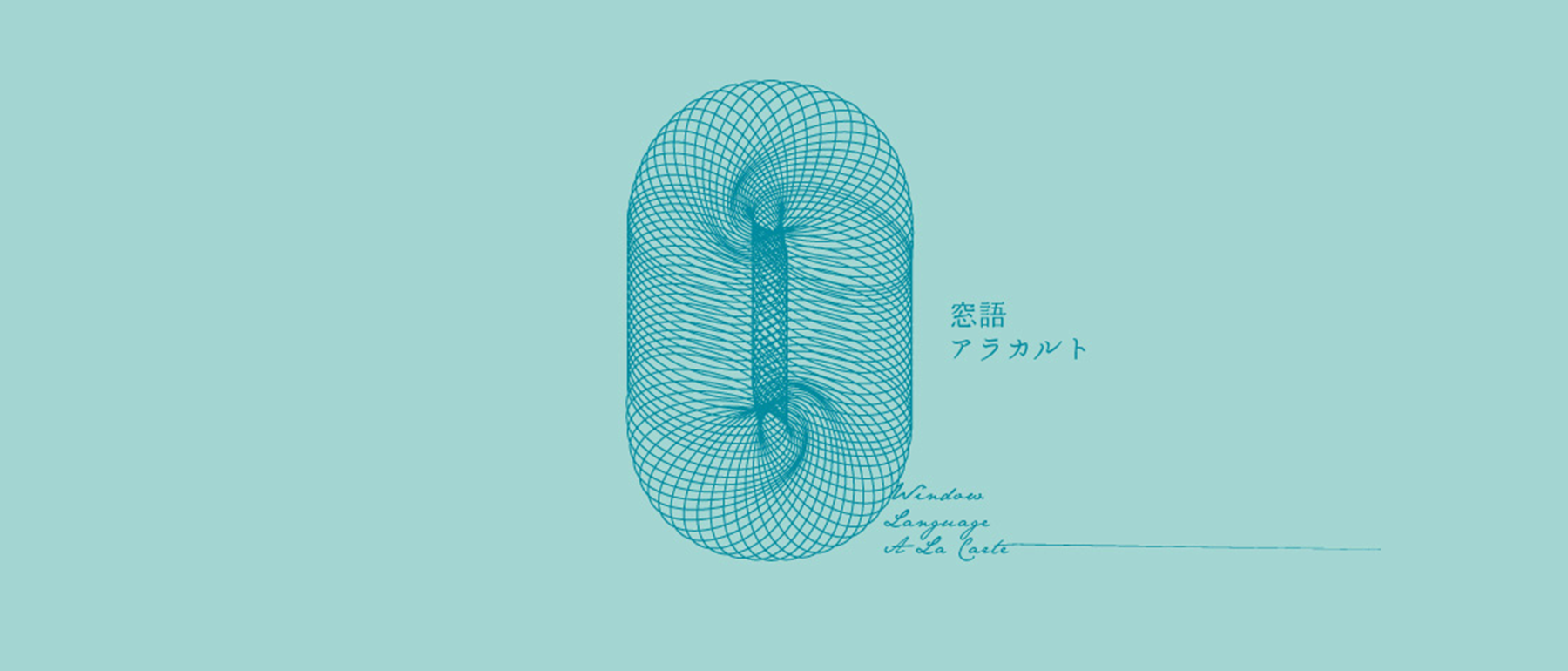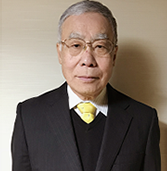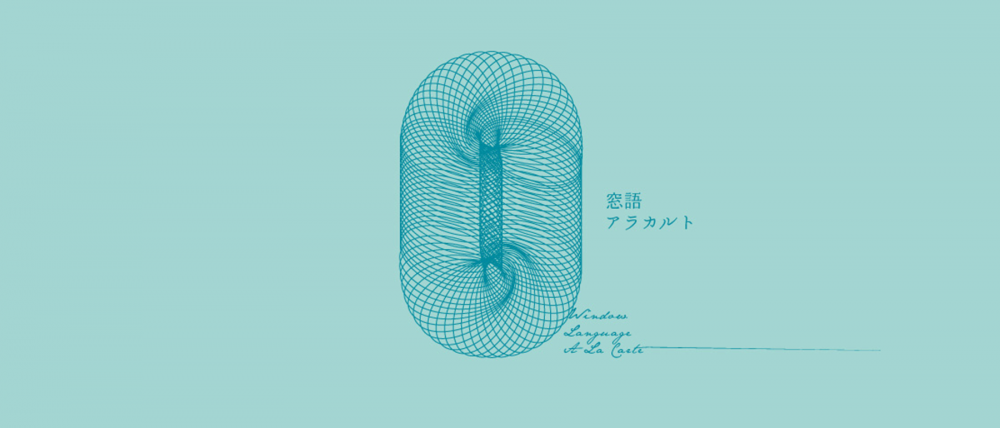
Series Window Terminology à la Carte
Windows in the Tokunoshima, Amami Region: Boma Shimaguchi Dialect
26 Sep 2022
Linguist Yasunari Ueda has been delving into the origins of words from around the world that mean “window” to understand how the concepts behind them have evolved over the ages. In this article, he focuses on the dialect of Shimaguchi spoken on the Amami island of Tokunoshima. Here, the word “shima” [lit. “island”] has the meanings of “village”, “community”, and “homeland”, while “kuchi” [lit. “mouth”] means “language”. The term “Shimaguchi” hence means “the language of one’s homeland”, and it is also used to describe the various dialects spoken on the islands surrounding Tokunoshima.
The entry on the word for “mado” [“window” in common Japanese] in Teruo Hirayama’s book Amami hōgen kisogoi no kenkyū [A study on the basic vocabulary of the Amami dialects] (Kadokawa Shoten, 1986) states: “[madu] (n.) There were no windows” (p. 677). In other words, there was no expression in the Tokunoshima-Kametsu Shimaguchi dialect that corresponded to the common-language word “mado” at least until around the years Showa 59 (1984) and Showa 60 (1985). 1 If the expression did not exist, neither did the thing nor the concept of the thing that the expression was supposed to describe. The same was true in the Tokunoshima-Boma Shimaguchi, which is my mother tongue.
While there were no glazed windows on Tokunoshima, the once-common thatched-roof houses there did have wall openings called [jadu], which were made using wooden boards. 2 The rest of the walls of these houses were normally also made of thatch, so there was no way to install window frames in them. Sections of the walls were instead left unthatched, and panels made out of several 10- to 15-centimeter-wide boards were propped over the openings. These panels could be moved to bring in or block out the light. 3
Openings that could be called “mado” only appeared on the island when houses started to be built as wood-frame buildings with walls made using wood boards and roofs covered with corrugated metal or tiles. But even these early windows were not glazed. They were composed of the aforementioned board panels and frames the size of half a tatami mat made using rafter wood. Such openings were called “hanmado” [lit. “half windows”] (half-mat-size windows), and they quite literally were not full-blown windows. Their merit was that they had sills, which made them easier to open and close. When closed, they obviously blocked not only the light but also the outdoor air. They were not airtight by any means, however, as they had plenty of gaps. If anything, this was a good thing in the subtropical climate, as it meant that breezes could still pass through.
As people became relatively more affluent, more houses with hanmado fitted with glass were built on the island, and eventually, aluminum sash windows and shutters also came to be used. The once-common board shutters and hanmado can now only be found on buildings such as barns and warehouses.
Now, what about the words for “window” in Shimaguchi?
The Shimaguchi word [madu] likely formed through a sound change from the common-language word “mado”. The [o] sound in the common language often turns into [u] in Shimaguchi (e.g., the common-language word “omou” [“think”] is [ʔumujun] in Tokunoshima-Boma Shimaguchi).
The Shimaguchi word [ma:] means “opening” or “gap”. This forms part of the Shimaguchi expression [ʔe:ma:], which is something of a reduplicated word. 4 5
The word [ʔe:ma:] is formed by joining [ʔe], or the stem of the Shimaguchi verb [ʔe:jun], meaning “to open”, with the noun [ma:]. It therefore means “an opening” or “an opened space”. 6 [ʔe] has also come to be used in a temporal sense, and it has taken on the abstract meaning of “human relationships” as well. 7
Now, how about [do]? Since the Satsuma Invasion of the Ryukyus (1609) of the early Edo period, brown sugar production has been the main industry in the Ryukyu Islands. The places where the sugar cane presses were used were called [kʔummando:]. Cows were used to power these presses.
The places where people used to stop to rest when carrying goods over long distances on their shoulders and backs were called [jasïmindo:] (i.e., resting place). As one can see, [do:] means “place”. 8 By extension, [mado] means “an open place” or “an open space”, and it is used to describe places from where light enters, places where air passes in and out, and places from where you can look outside. This word underwent a sound change to become [madu].
The thatched houses that were once a staple of the island landscape did not have anything morphologically equivalent to what is described as “mado” in the common language. 9 However, they did have “open places” in their walls for letting in light and ventilating air. While known as [ʔe:ma:], these openings provided the basic functions of windows, so one could say that the houses had prototypical “mado”. 10
What I have presented here with examples from the Tokunoshima-Boma dialect are my personal ideas on the development and semantics of the word “mado” ([madu]) before it came to be associated with “me” [lit. “eyes”] or architectural “to” [lit. “doors”].
Notes
1 : According to the book’s preface, field surveys were conducted in “May of Showa 59 (trial survey), July and August of the same year (main survey), and March of Showa 60 (supplemental survey)” (p. 2).
2 : The word [jadu] was likely derived from the common-language expression “ya no to” [lit. “doorway of house”]. The common language word “ya” [“house”] is pronounced [ja:] in Shimaguchi, so one can understand how “ya no to” [which can be contracted to “yato” or “yado”] could have turned into [jadu].
In Tokunoshima Shimaguchi, the meaning of the word [jadu] has shifted away from “doorway of house” to instead describe the door panel itself, which is typically the size of one or one half of a tatami mat, made of wood boards, and attached to a house’s entrance or wall openings.
The door panels of a silled opening composed of one or two operable [jadu] that opened to the side were called [ʔamadu] [lit. “rain doors”]. When an [ʔamadu]was detached from a house, it lost its function as a rain shutter and became simply a door panel, so it was called a [jadu]. A [jadu] would sometimes be detached from its frame and used as a makeshift stretcher.
3 : When I was a child, the entrances to cow sheds ([ʔusïʔjadui]) had door panels made of single straw mats hung from the eaves (the word [jadui] is probably the product of a sound change from the common-language word “yadori” [“shelter”]).
4 : On the phonetic transcription of [ʔe:ma:], [ʔe:], and [ʔe:jun]: The first part of these words, [ʔe], is articulated with a glottal stop or is accompanied by plosion. In the aforementioned book Amami hōgen kisogoi no kenkyū, the Shimaguchi word for “akeru” [“to open”] is transcribed as [ʔe:jun] (p. 24), whereas the word for “dōkutsu” [“cave”] is transcribed as [je:] (p. 44). When used at the beginning of a word, the [ʔe] is heard as a guttural sound accompanied with an [i] sound to the ears of common Japanese speakers. This presumably is why it is transcribed as [je:].
5 : The expression for “open time”, as in “hima” [“free time” in common Japanese], is also [hima] in Shimaguchi. The expression seems to have formed from a sound change of [ʔe:ma]. In other words, what originally was a spatial expression evolved into a temporal expression. Before the “mado” was introduced into Shimaguchi both as a thing and concept, the word [madu] was used entirely to describe “open time”, as in “hima”. While it depends on the speaker, some make the phonetic distinction and use [mado] when describing architectural openings and [madu] when describing free time.
6 : Evidently, blacksmithing began in Tokunoshima in the late Meiji era (Ichiro Yasuyama, “Tokunoshima ni okeru kajiya” [Blacksmiths in Tokunoshima], reproduced word processor manuscript). At the time, blacksmithing was practiced in a cave-like space ([ʔje:]) under an uplifted coral reef in the village of Kametsu. That place was known as the [kandʒaʔje:]. The word [kandʒa] means “smithy” [“kajiya” in common Japanese]. The expression [kandʒaʔje:] thus means “smithy cave” (ibid.).
7 : Example of its use in a temporal sense: [ʔuiga jammë nu kusatui ʃuruʔe:, wa:ja juiwatʃë ʃi: do:] (While you weed the garden, I’ll make dinner). Example of its use in an abstract sense: [ʔari tunu ʔe: ja ʔugaʃigari jutakunen] (I’m not on good terms with that person).
8 : Just as it is used in the word “medo” [lit. “eye place”; used in the meaning of “place one is eyeing”, as in a “goal” or “prospect”], “do” is another word for “place” in common Japanese. The word [do:] is also used in the Shimaguchi word [ʔaʃïbindo:] (“playground”).
9 : While these houses are described as being “kayabuki” ([gïabuki]) [“thatched”], the thatch used was composed mostly of straw rather than reed [the material typically used for thatching in mainland Japan]. The straw and reed were layered up and finished with an outer layer of reed.
10 : A window provides three basic functions: lighting (allowing light to enter), ventilation (allowing air to circulate in and out), and views (allowing occupants to look outside).
Yasunari Ueda
Born 1948 on the island of Tokunoshima in the Oshima District of Kagoshima, Japan. Graduated from the Department of Philosophy in the Faculty of Letters of Kobe University and received a masterʼs degree from the Hiroshima University Graduate School of Letters. Taught as a teaching assistant and lecturer at the Faculty of Humanities of Chiba University, an assistant professor at the College of General Education of Kyushu University, and an assistant professor at the School of Letters of Hiroshima University before becoming a professor at the Graduate School of Letters of Hiroshima University in 2001 (retired in 2013). Doctor of Letters. Specialist of modern German studies. Known particularly for his research on Japanese and German idioms, the linguistic theories of Karl Bühler (1879–1963), German sociolinguistics, and applied linguistics (foreign language education). Currently working on making proposals for vocabulary learning based on the findings of his comparative research on Japanese and German idioms.

MORE FROM THE SERIES
-

Window Terminology à la Carte
Vol. 6 : Window Culture Studies—Towards Further Linguistic Explorations
18 Dec 2018

Window Terminology à la Carte
Vol. 5: A Contrastive Linguistic Analysis of Words for “Window”—Based on Comparative Analyses of Japanese, German, English, and Italian Idioms
27 Nov 2018

Window Terminology à la Carte
Vol. 4: Windows in Italian
11 Sep 2018

Window Terminology à la Carte
Vol. 2: Windows in German
27 Jun 2018




